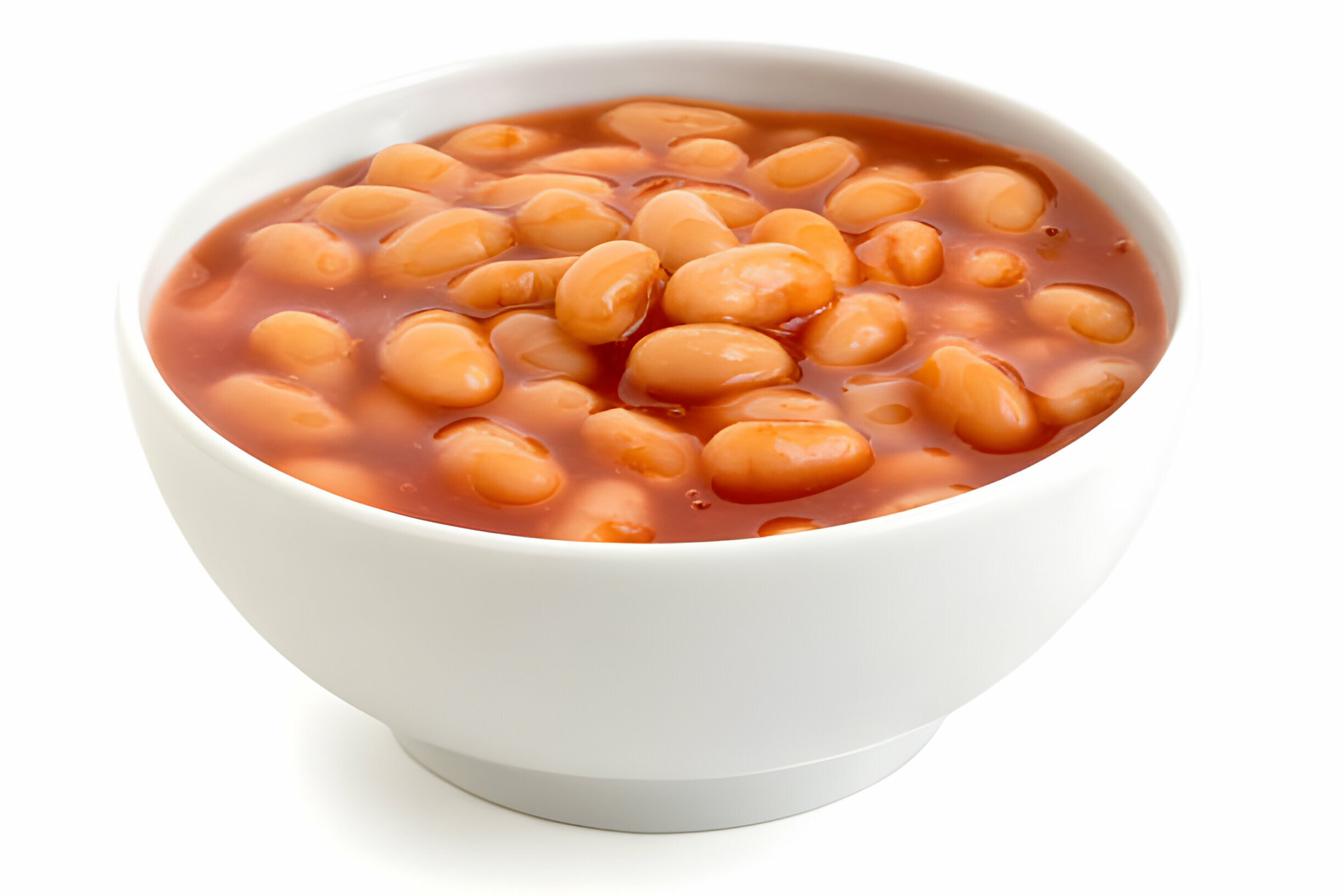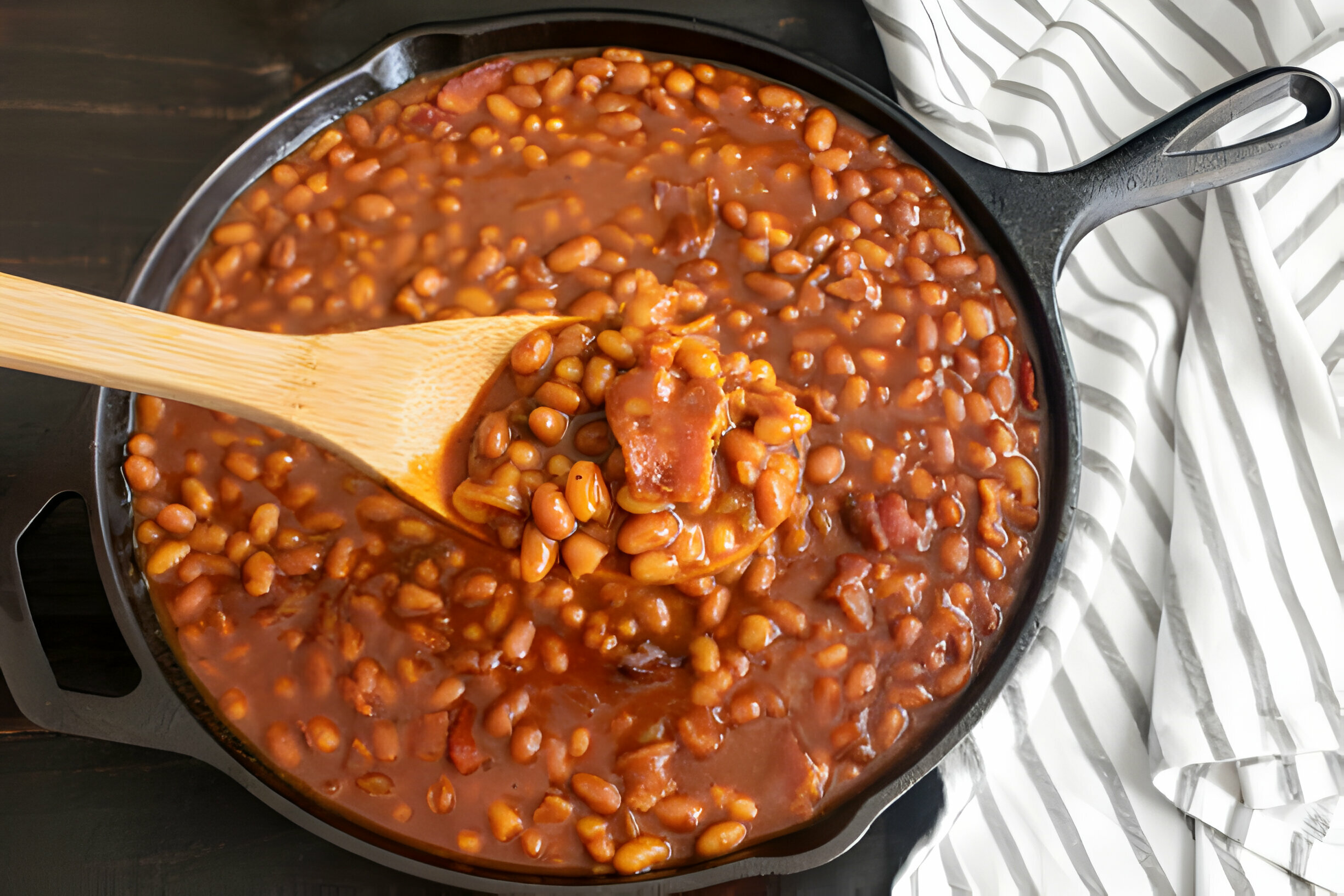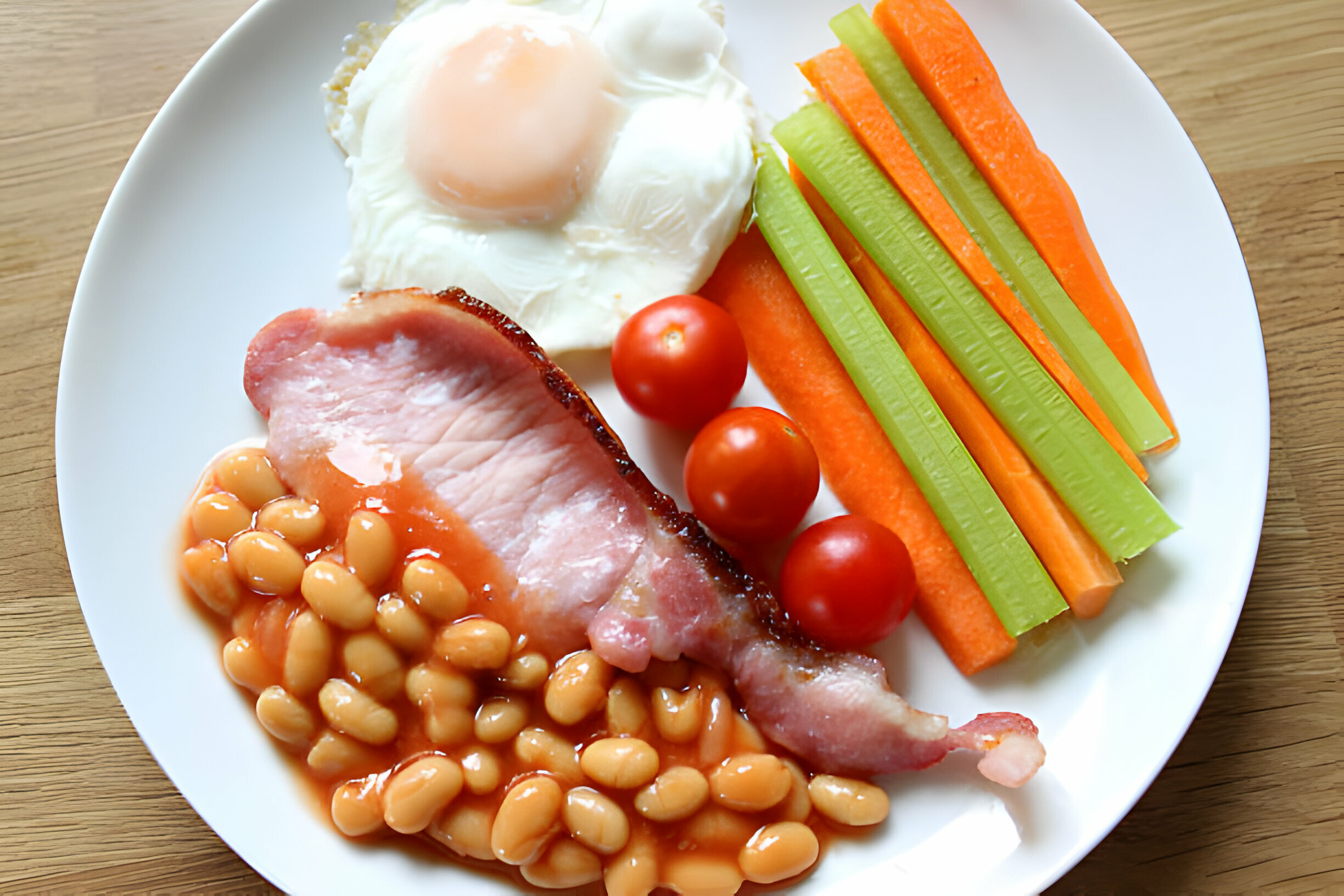Introduction

Baked beans: a humble dish with a storied past that spans continents and centuries. Originally hailing from Native American cuisine, this hearty meal has found its way into the hearts and breakfast plates of people around the globe. From the smoky Boston variety laced with molasses and bacon to the tomato-based versions beloved in the UK, baked beans have become a versatile staple. Not only are they delicious, but they’re also packed with fiber, protein, and essential nutrients, making them a cornerstone of a balanced diet. This guide will take you through the journey of creating the perfect homemade baked beans, revealing the secrets to customizing your batch to perfection.
Why Homemade Baked Beans Are Superior
While the convenience of canned baked beans cannot be denied, the homemade version offers an array of benefits that canned beans simply can’t match. For starters, making your baked beans allows you to control the quality and freshness of ingredients, avoiding the preservatives and high sugar content often found in store-bought versions. Homemade baked beans also offer the flexibility to adjust flavors to your liking, whether you prefer them spicy, smoky, or sweet. Moreover, the process of slow-cooking beans at home fills the kitchen with a comforting aroma that canned beans can’t replicate, turning a simple meal into an experience. By choosing to make your baked beans from scratch, you embark on a culinary adventure that elevates this classic dish from a mere side to the star of your dining table.
Choosing the Right Beans for Baked Beans
The foundation of any delicious baked beans dish lies in selecting the right type of beans. While navy beans are the classic choice, offering a mild flavor and creamy texture perfect for absorbing sauces, other varieties such as Great Northern, pinto, or even black beans can provide delightful variations. For those leaning towards traditional recipes, navy beans are your go-to. However, experimenting with different types can tailor the dish to your taste preferences.
Dried vs. Canned Beans
- Dried Beans: Starting with dried beans requires a bit more preparation, including soaking and pre-cooking, but it rewards you with superior texture and flavor. Soaking overnight not only shortens cooking time but also makes the beans more digestible.
- Canned Beans: For those short on time, canned beans can be a convenient alternative. Just remember to rinse them thoroughly to remove any excess sodium or preservatives.
Preparing Beans for Baking
Before baking, dried beans should be soaked, either overnight in cold water or using the quick-soak method of boiling for a few minutes then letting them sit for an hour. This step is crucial for softening the beans and ensuring even cooking. After soaking, simmer the beans until tender but not mushy, as they will continue to cook in the oven.
Essential Ingredients and Substitutes
A classic baked beans recipe features a harmony of sweet and savory flavors, achieved through a careful selection of ingredients. Here are the essentials, along with suggestions for substitutes to cater to various dietary preferences:
- Sweeteners: Molasses and brown sugar give baked beans their characteristic sweetness. For healthier options, consider maple syrup or honey.
- Mustard and Vinegar: These add tanginess and depth. Apple cider vinegar can be substituted for white vinegar, and Dijon mustard can replace yellow mustard if preferred.
- Bacon or Pork: Traditional recipes often include bacon or salt pork for richness and smokiness. Vegetarians can opt for smoked paprika or liquid smoke for similar flavor profiles without the meat. Explore quick vegetarian breakfast ideas for inspiration on incorporating plant-based ingredients into classic dishes.
- Tomato Sauce: This adds acidity and color. Tomato paste diluted with water is a suitable substitute.
- Onions and Garlic: These aromatics are essential for building flavor. Don’t hesitate to adjust quantities to your taste.
Experimenting with these ingredients allows you to create a dish that suits your flavor preferences and dietary needs. Whether you’re crafting a vegetarian version or sticking to the classic, the key is in balancing the sweet, savory, and tangy elements to perfection.
Step-by-Step Classic Baked Beans Recipe

Creating the perfect classic baked beans is an art that combines simplicity with patience. Here’s a detailed guide to help you master this comforting dish:
- Ingredients:
- 1 lb dried navy beans (soaked overnight and drained)
- 8 cups water (for cooking beans)
- 1 medium onion, finely chopped
- 3 cloves garlic, minced
- 1/2 cup molasses
- 1/3 cup brown sugar
- 1/4 cup tomato sauce
- 2 tablespoons apple cider vinegar
- 1 tablespoon mustard powder
- 1/4 pound bacon, cut into small pieces (optional)
- Salt and pepper to taste
- Preparation:
- Pre-cook the beans: In a large pot, add the soaked beans and water. Bring to a boil, reduce the heat, and simmer until beans are tender but not falling apart, about 1-1.5 hours. Drain and set aside.
- Preheat your oven to 325°F (163°C).
- Cooking:
- In a Dutch oven or oven-safe pot, sauté the onion, garlic, and bacon (if using) until the onions are translucent and bacon is slightly crispy.
- Add the pre-cooked beans to the pot along with molasses, brown sugar, tomato sauce, apple cider vinegar, and mustard powder. Stir well to combine.
- Cover the pot and bake in the preheated oven for about 2-3 hours, stirring occasionally. If the mixture seems too dry, add a little water to adjust the consistency.
- Serving:
- Taste and adjust seasoning with salt and pepper. Serve hot as a side dish or over cornbread for a comforting meal.
Variations on the Classic Baked Beans Recipe
While the classic baked beans recipe is a delight in itself, experimenting with variations can add exciting flavors to your meals. Here are a few ideas:
The Boston Twist
- Enhance your baked beans with a generous addition of molasses and replace water with apple cider for a deeper flavor profile, embodying the traditional Boston baked beans spirit.
Spicy Chipotle Baked Beans
- Introduce a spicy kick by adding chipotle peppers in adobo sauce to the mix. This variation is perfect for those who enjoy a blend of sweetness with a hint of heat.
Vegetarian Maple Baked Beans
- For a vegetarian version, omit the bacon and add a splash of maple syrup instead of brown sugar for a subtly different sweetness. Liquid smoke can mimic the smokiness that bacon typically provides.
Mediterranean-Style Baked Beans
- Incorporate Mediterranean flavors with the addition of sundried tomatoes, olives, and a dash of oregano. This version pairs wonderfully with crusty bread.
Each of these variations can offer a unique take on the classic recipe, allowing you to explore different cultures and flavors right from your kitchen. For more inspiration on adding variety to your meals, explore recipes like Captain Rodney’s Dip for a gourmet experience.
Serving and Pairing Suggestions
Baked beans are incredibly versatile, serving as both a comforting side dish and a hearty main. Here are some perfect pairing suggestions to elevate your baked beans experience:
- As a Side: Serve alongside grilled meats or roasted vegetables for a balanced meal. They’re especially popular at barbecues and picnics.
- With Breakfast: Baked beans make a savory addition to a full English breakfast or simply served over toasted bread for a fulfilling start to the day.
- As a Main Dish: Transform baked beans into the star of the meal by topping them with poached eggs or mixing them into a savory vegetarian stew.
Creative serving ideas can also include using baked beans as a filling for tacos or burritos, incorporating them into a shepherd’s pie for an extra layer of flavor, or even as a base for a homemade bean dip.
Baked beans are incredibly versatile and can complement a variety of meals. Here’s how you can incorporate them into different meals throughout the day:
Breakfast

- On Toast: Serve baked beans over toasted bread for a classic, hearty breakfast.
- Full English Breakfast: Include baked beans as part of a full English breakfast alongside eggs, sausages, bacon, mushrooms, and tomatoes.
- Breakfast Burrito: Fold baked beans into a breakfast burrito with scrambled eggs, cheese, and avocado for a filling start to the day.
Lunch
- Jacket Potatoes: Top baked potatoes with a generous helping of baked beans and a sprinkle of cheese for a comforting lunch.
- Baked Bean Salad: Mix cooled baked beans with fresh vegetables and a vinaigrette dressing for a nutritious salad.
- Sandwiches and Wraps: Add baked beans to sandwiches or wraps for extra protein and flavor.
Dinner
- With Grilled or Barbecued Meats: Serve baked beans as a side dish with grilled or barbecued meats. They pair wonderfully with ribs, chicken, or sausages.
- Casserole Base: Use baked beans as the base for a hearty casserole, adding meats and other vegetables as desired.
- Vegetarian Shepherd’s Pie: Layer baked beans with vegetables under a mashed potato topping for a vegetarian take on the classic shepherd’s pie.
Snacks and Sides
- On Nachos: Spoon baked beans over tortilla chips, add cheese, and grill for a quick snack.
- With Cornbread: Serve warm baked beans alongside cornbread for a comforting side dish.
Baked beans are not only limited to these options; their use can be as diverse as your imagination. They’re a fantastic way to add flavor, nutrition, and heartiness to any meal, making them a staple in pantries around the world.
Storing and Reheating Baked Beans
To ensure your baked beans remain delicious days after cooking, proper storage is key:
- Refrigeration: Cool the baked beans completely before transferring them to an airtight container. They can be refrigerated for up to 4 days.
- Freezing: For longer storage, freeze baked beans in airtight containers or heavy-duty freezer bags. Properly stored, they can last for up to 6 months. Thaw overnight in the refrigerator before reheating.
- Reheating: Warm the beans over medium heat on the stove, adding a splash of water if they’ve thickened too much. Alternatively, microwave them in a covered dish, stirring occasionally until heated through.
Common Mistakes to Avoid
Achieving the perfect baked beans can sometimes be tricky. Here are some common mistakes to avoid:
- Rushing the Cooking Process: Baked beans develop their best flavor and texture through slow cooking. Trying to speed up the process can result in undercooked beans or a lackluster sauce.
- Overseasoning Early On: Flavors deepen and evolve during cooking. It’s best to season conservatively at the start and adjust towards the end of the cooking time.
- Ignoring the Importance of Soaking: Soaking dried beans not only reduces cooking time but also helps them cook more evenly. Skipping this step can lead to beans that are tough or unevenly cooked.
Remember, making great baked beans is as much about the journey as it is about the destination. Taking your time and avoiding these common pitfalls will help ensure your dish is a success.
Nutritional Information and Health Considerations
Baked beans are not just a tasty addition to meals; they’re also packed with nutritional benefits that can play a significant part in a balanced diet. Here’s what makes baked beans a healthy choice:
- Rich in Protein: Beans are an excellent source of plant-based protein, essential for muscle repair and growth.
- High in Fiber: The high fiber content helps improve digestion and can contribute to a feeling of fullness, aiding in weight management.
- Loaded with Vitamins and Minerals: Baked beans are a good source of iron, magnesium, and B vitamins, contributing to overall health and energy levels.
- Low in Fat: Homemade baked beans can be made with little to no added fat, making them a heart-healthy option.
By choosing to make baked beans at home, you have the power to control the amount of added sugars and sodium, making your dish not only delicious but also a healthier option compared to store-bought varieties. for more nutrition infos Healthline
FAQs About Making Baked Beans
To ensure every reader can achieve baked beans perfection, let’s address some common questions:
- Can I make baked beans without added sugar? Yes, you can reduce or omit added sugars by using natural sweeteners like apple sauce or by enhancing the natural sweetness of the tomatoes.
- Are baked beans gluten-free? When made from scratch, baked beans can easily be gluten-free. However, always check the labels on store-bought ingredients like tomato sauce or molasses to be sure.
- How can I make my baked beans thicker? If your baked beans are too watery, continue cooking them uncovered for a little longer, allowing some of the liquid to evaporate and the sauce to thicken.
For more tips and recipes, explore the rich variety of dishes on RecipeStrip.com, where you can find everything from quick vegetarian breakfasts to elaborate dinner ideas.
Conclusion: The Joy of Homemade Baked Beans
Embarking on the journey of making homemade baked beans is about more than just preparing a side dish; it’s about rediscovering the joy of cooking and the satisfaction of enjoying a meal that’s been crafted with care and attention. Whether you stick to the classic recipe or explore innovative variations, baked beans can offer a comforting taste of home or an exciting new flavor experience.
As we’ve seen, homemade baked beans are versatile, nutritious, and capable of being customized to suit any palate or dietary need. By making your baked beans from scratch, you embrace the essence of home cooking: creating something wonderful from simple ingredients. So, we encourage you to roll up your sleeves, dive into the recipe, and make your next meal unforgettable with the addition of homemade baked beans.
Call to Action
Now that you’re equipped with all you need to know about making perfect baked beans, why not share your culinary adventures? Head over to RecipeStrip.com to post your favorite baked beans variations, or explore our site for more inspiration to complement your next meal. Happy cooking!

